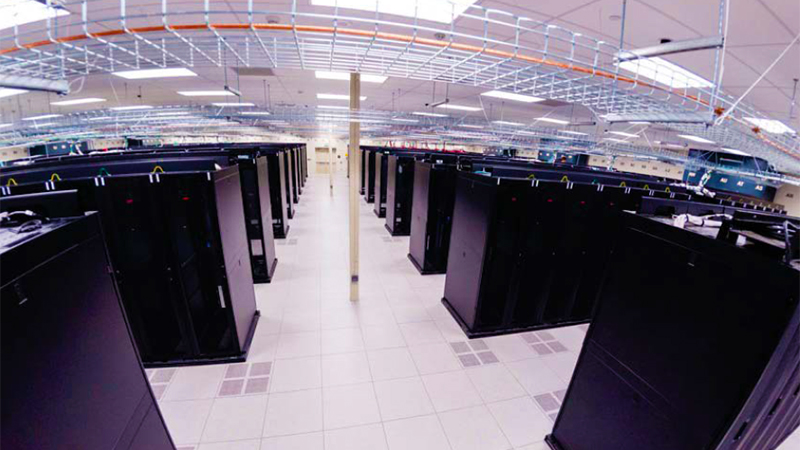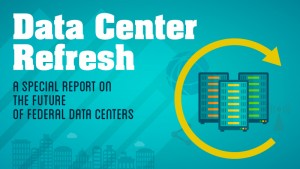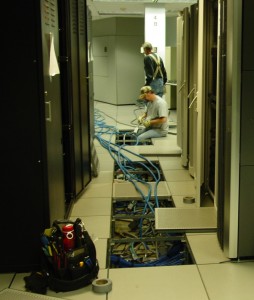
The Defense Department likes to hit its targets. So you can imagine the frustration that the department’s chief information officer, Terry Halvorsen, must have experienced when he realized that he wasn’t even going to come close to reaching the Federal mandate to close at least 40 percent of the department’s data centers by 2015.
 By the end of last year, DOD had closed only 568 of its 3,115 data centers—or about 18 percent. The slower-than-planned pace of closures resulted in the department missing out on $680 million in potential savings, according to a new DOD inspector general report, which placed the blame directly at the feet of Halvorsen. And the situation gets worse. Now the department may have trouble hitting an internal target of closing 60 percent of all data centers by 2018 for an estimated $1.8 billion in savings.
By the end of last year, DOD had closed only 568 of its 3,115 data centers—or about 18 percent. The slower-than-planned pace of closures resulted in the department missing out on $680 million in potential savings, according to a new DOD inspector general report, which placed the blame directly at the feet of Halvorsen. And the situation gets worse. Now the department may have trouble hitting an internal target of closing 60 percent of all data centers by 2018 for an estimated $1.8 billion in savings.
In response to the harsh assessment by the IG, Halvorsen acknowledged the department’s lack of progress, but also said he’s launching a new strategy that will reinvigorate the Pentagon’s data center consolidation and optimization efforts, and help the department get to “a more complete cloud environment.”
Time To Get Tough
According to Halvorsen, who provided detailed answers to MeriTalk’s questions about his revised strategy during a press briefing March 8, the real challenge of data center consolidation is identifying the savings.
“This is less about counting numbers of data centers and numbers of servers. Frankly, I’m not going to do that,” he said. “I’m counting the money we’re spending on that and we’ve got to reduce that and use that money for higher priorities.”
Of course, the Defense Department is much larger than just the headquarters elements housed in the Pentagon. The services and component agencies are located all over the world, and they are struggling to keep up with the closure goals and the policy. For Halvorsen, it’s time to get tough.
“We are going to have to move better on data center consolidation. We are behind. We are looking at some very specific actions, for example identifying what are our highest cost data centers and then…we’re going to be more proscriptive from a DOD level about actions everyone will have to take with data centers,” he said.
In direct response to questions from MeriTalk about how he plans to better control the services and component agencies, Halvorsen said he’s changed some of the accounting codes so that he now has a clear picture of expense elements associated with data centers.
“We have an agreement on what I will call a cost model that everyone will report on their data centers, so that I will be able to see what the costs are and what specifically is driving them, to include further breakdowns of personnel,” Halvorsen said. “We have an agreement on how we compare costs between different data centers, so that we are comparing it in a completely apples-to-apples manner. Part of the problem that we had was there were different ways of computing data center costs. We are now very close to standardizing how we’re going to actually do data center costs.”
Those standards will allow Halvorsen to then tell the components what specific actions they need to take to reduce costs.

People = Cost
For Halvorsen and his new strategy, there is one clear cost driver when it comes to data centers: people.
“You’ll hear people talk about power, you’ll hear them talk about location. Those are factors, but labor dominates this cost,” Halvorsen said. “So what you have to look at when you capture the costs of data centers is how many people are doing what? If you still have a lot of people doing monitoring and maintenance of servers, that’s a bad use of people. That can be automated today in an efficient data center.”
The focus of Halvorsen’s strategy is to study the labor cost of data centers, and then analyze the data to see if those costs are being driven by consolidation instead of labor. “I’ll be honest with you, I have seen no examples where that is my problem. I would kind of like that to be the problem. It isn’t,” he said. “But we will do the cross checking to ensure that a particular data center’s costs are not simply a factor of consolidation making it bigger.”
To get to the point where DOD is operating data centers as efficiently as industry is really about “scrubbing the labor and making sure that we have made the automation investments that are required to drive the labor costs down,” Halvorsen said. “Those are the best business practices that industry is using.”
Consolidating To The Cloud
One of the first strategy actions Halvorsen plans to undertake in the next 30 days is to begin issuing requests for proposals for commercial providers to operate DOD data centers on DOD property.

“In places here the data could reside in completely commercial sources, we ought to put it there. Every piece of data says that’s less expensive than us maintaining it ourselves,” Halvorsen said. Commercial providers “would actually either run a facility that we were operating or maybe put a facility on our property in an existing building. That also has proven to be, for much of the data we have, a more effective way of storing the data. And then we’re doing everything we can to look at where the data centers we want to keep are [located].”
None of this means that government data centers will cease to exist. Rather, the strategy is based on a Navy case study, according to Halvorsen. “HP is running Navy data centers, to include Navy data centers at the secure level, on-premises for the Navy. We are using that model and we’re going to expand that across the rest of DOD.”
DOD is also planning contracts to allow four commercial providers to come into DOD and operate at Level 4—two data sensitivity levels below classified—and more work is being done to allow more companies to participate in the classified data space.
“I hope this summer, if the Windows 10 [rollout] goes well, the next announcement that we will make will be that DOD has decided to go to a more complete cloud environment, similar to…what a Windows 365 cloud environment would do,” Halvorsen said March 22 during a House Armed Services Committee Hearing.
Will The Strategy Slow or Speed Consolidation?
Halvorsen is adamant that his new strategy of focusing on cost reduction and efficiency will actually lead to a faster rate of data center closures throughout DOD.
“It will definitely not result in a slowing,” he said. “If we can close data centers or make them more efficient that money goes right back into the service accounts for all kinds of things, modernization of non-IT equipment and IT equipment. I actually think this focus is going to make us go faster. We want to go faster, but we want to recoup the money.”
“Don’t make a mistake about why we’re doing this. Certainly, we’ll get some improved security, smaller footprint and modernization—that’s important—but the driver here is, frankly, leaving money on the table that we ought to use for really important things inside the department.”
In This Series
Data Center Refresh: A Special Report on the Future of Federal Data Centers
DCOI Redefines Federal Data Center Policy
Inside The Pentagon’s Data Center Strategy
Video: 2016 FITARA Forum Keynote–GAO’s Dave Powner
Video Interview: Joyce Hunter on Agriculture’s FITARA Experience
